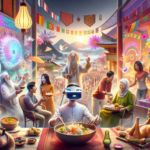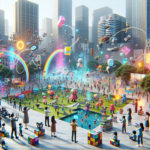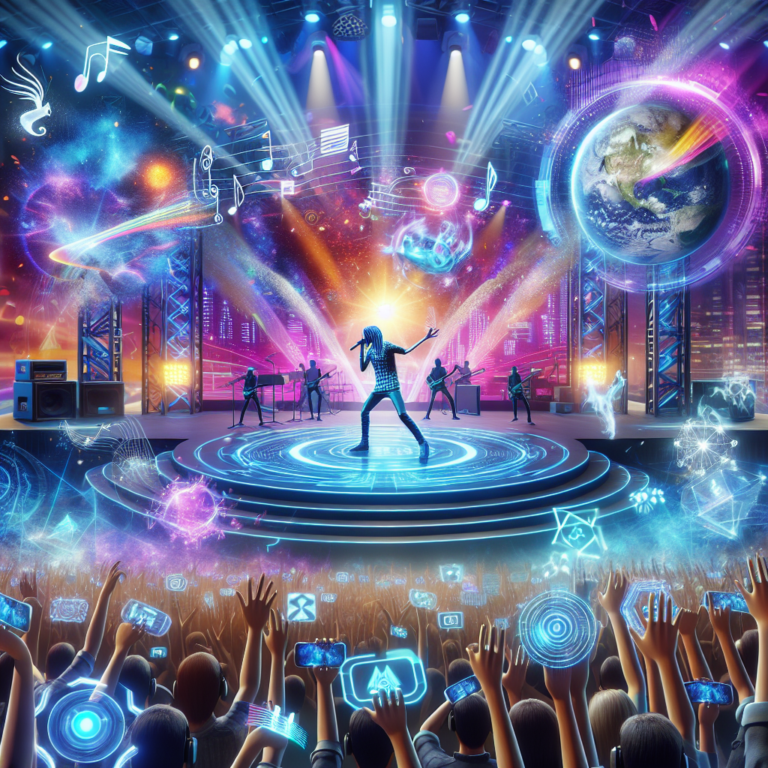Exploring VR Music Concerts with Holograms: A New Era for Music Lovers
Transforming Music Experiences with VR and Holograms
Imagine enjoying a live concert right from your living room, immersed in the enchanting world of virtual reality (VR) and accompanied by realistic holograms. This vision isn’t just a daydream; it could soon become a reality thanks to platforms like Spotify. Let’s delve into what these VR music concerts might look like and the profound impact they could have on music enjoyment.
The Incredible Impact of VR on Music
VR technology is already making strides in the music realm. With partnerships involving artists such as Billie Eilish and platforms like Oculus, fans are starting to access VR concerts that bring the exhilaration of live performances straight to their devices. These events are not merely passive; they invite fans to interact, making them feel as though they are dancing with thousands in attendance.
Experience the Front Row Like Never Before
Spotify could elevate this experience even further by incorporating 360-degree cameras and sensors into live events. This innovation would allow attendees to live-stream concerts using a VR headset, giving them a genuine front-row feel without the expensive price tag. Instead of spending around $811 for a premium ticket to see Billy Joel, fans might only need to invest approximately $75 for the VR version. This change not only benefits artists and venues financially but also democratizes access to high-quality live music.
Embracing Holographic Technology
Holograms represent a groundbreaking advancement that Spotify could easily integrate into its VR music concerts. Artists like Tupac Shakur and Biggie Smalls have already been resurrected via holographic performances, delivering a lifelike vibe for fans. These innovative displays capture the essence of the performers, creating a thrilling connection between the artists and their audience.
Bringing Virtual Artists to Life
By collaborating with companies like Factory New, the creators of virtual artist FN Meka, Spotify could revolutionize the concert experience. Imagine witnessing a hologram of Whitney Houston or Michael Jackson performing live, complete with their iconic movements and voices. This kind of technology paves the way for fans to experience music in ways that were once beyond imagination.
Augmented Reality Enhancements
Augmented reality (AR) can further enrich VR music concerts, layering additional interactive features on top of the virtual experience. By incorporating AR technology, fans could engage with animated effects, unique weather simulations, or even virtual mascots that enhance the concert experience before, during, and after the show. For instance, during a festive concert, audiences might see animated snowflakes interacting with the performance.
Interactive AR Features for Fans
Spotify could harness AR to let fans capture videos and pictures with special effects throughout the concert. Utilizing volumetric capture technology, similar to Sam Smith’s AR experience on Spotify, fans could interact with a miniature hologram of their favorite artist, transforming their mobile device into a portal to the concert. This not only elevates the visual experience but also enhances fan engagement and involvement.
Benefits of VR Music Concerts for Artists and Fans
The fusion of VR and hologram technology in live performances offers striking advantages for both artists and fans.
Cost-Effective and Safe Performance Options
For artists, VR music concerts can lower the operational costs typical of traditional shows. With reduced needs for equipment, personnel, and travel, artists can perform safely, particularly during health crises. This method allows them to broadcast to a wider audience without the logistical challenges of touring, which in turn expands their fan base and revenue opportunities.
Accessibility and Affordability for All
Fans also benefit significantly from these innovative concerts, as they offer a more accessible and budget-friendly means to enjoy live music. Those who may have disabilities or cannot attend concerts in person can still revel in the performances. With reduced ticket prices and the convenience of enjoying a concert from anywhere, live music becomes more inclusive than ever.
The Bright Future of Live Music Experiences
As both VR and AR technologies advance, we can anticipate a transformative change in how we experience live music.
Leveraging Virtual Platforms for Concerts
Virtual platforms have already showcased their potential, as demonstrated by Travis Scott’s record-breaking Fortnite concert, which attracted 12.3 million unique players. Such events can generate immense revenue through social media interactions, ticket sales, and merchandise. Advertisers are eager to tap into AR advertising, presenting new opportunities by converting passive audiences into active consumers.
Global Engagement with Multiple Simultaneous Performances
The incorporation of holographic technology allows artists to hold multiple concerts at various locations at the same time without being physically present. This innovative approach not only lowers the costs traditionally associated with touring but also enables real-time engagement with fans worldwide, aided by captivating AR effects and targeted advertising.
Key Takeaways: The Future is Now
- VR Concerts: Offering an immersive front-row experience from any location.
- Holograms: Reviving artists and generating lifelike performances.
- AR Enhancements: Integrating interactive elements and special effects into the concert experience.
- Benefits: Cost-effective, safe, and accessible options for both artists and fans.
- Future Trends: Expanding virtual platforms, global reach, and novel advertising opportunities.
As we embark on this thrilling journey into the world of VR music concerts, the potential is limitless, and the future of music has never looked so bright! 🌟🎶




0 Comments